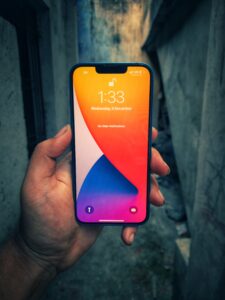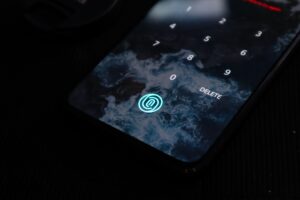 Biometric authentication methods, such as Face ID and in-display fingerprint sensors, have become the preferred choice for smartphone manufacturers. These technologies have not only fueled the ongoing iPhone vs. Android debate, but also provide a basis for comparison. While Face ID is predominantly utilized by iPhones, Android OEMs have mainly adopted in-display fingerprint sensors. In this article, we will take a look at Face ID versus in-display fingerprint sensors, assessing their security levels, advantages, disadvantages, and more.
Biometric authentication methods, such as Face ID and in-display fingerprint sensors, have become the preferred choice for smartphone manufacturers. These technologies have not only fueled the ongoing iPhone vs. Android debate, but also provide a basis for comparison. While Face ID is predominantly utilized by iPhones, Android OEMs have mainly adopted in-display fingerprint sensors. In this article, we will take a look at Face ID versus in-display fingerprint sensors, assessing their security levels, advantages, disadvantages, and more.
What is In-Display Fingerprinting?
Display fingerprint is a biometric authentication technology that allows users to open their phone just by placing their fingerprint on a particular spot on their smartphone’s display. This technology has become very popular in recent years. So much that now, even phones with MSRPs below $500 use the technology.

Types of In-Display Fingerprints
There are two types of in-display fingerprint sensors used in smartphones today. The first, and most commonly used one is the optical in-display fingerprint sensor, while the second is the ultrasonic in-display fingerprint sensor. The latter is more expensive than the first, so it’s mostly only used on flagship phone series like the Samsung S series. Difference? Well, the main difference between both fingerprint sensors is how they work. More on that later.
What is Face ID?
Face ID is the only biometric authentication used by Apple for its iPhones since the iPhone X. As you probably already know, Face ID works by scanning your face to unlock your phone. Just to make sure everything’s clear, we’re talking about 3D Face ID or recognition here (which is what Apple uses on iPhones), not the more common 2D face recognition, which is what most other brands like Samsung use and is less secure.
How Does In-Display Fingerprint Work?
Face ID and the in-display fingerprint sensor both do the same thing: secure our smartphones. But how do both of they work? As mentioned earlier, there are two types of in-display fingerprint sensors currently used on smartphones: optical and ultrasonic. Both sensors work pretty similarly, with the main difference being that one uses 3D while the other uses normal 2d images.
The Ultrasonic in-display fingerprint scanners use sound waves to create a 3D image of your fingerprint. This image is then compared to a stored image to verify your identity.
On the other hand, the optical in-display fingerprint scanners use light and a small camera to create an image of your fingerprint. This image is then compared to a stored image to verify your identity. Optical in-display fingerprint scanners are less expensive and more compact than ultrasonic in-display fingerprint scanners, but they are also less secure and accurate.
How Does Face ID Work?
Face ID is fairly simple. The 3D scanners we see today use infrared laser beams to scan most if not every part of your face to create a 3D model. The one on iPhones projects over 30,000 beams. This 3D model is then compared to the stored model to verify your identity.
Fingerprint Sensor Pros
Ultrasonic In-Display Fingerprint
More Secure
Out of the three biometric authentication systems we’re talking about in this article, the ultrasonic in-display fingerprint sensor is the most secure.
More Accurate
Ultrasonic fingerprint sensors are more accurate than optical sensors because they use 3D sound waves. This allows it to capture more details from a fingerprint, which means it’s less likely to fail to recognize your fingerprint.
Not Affected By Water or Dust
Ultrasonic fingerprint sensors use 3D sound waves to scan your fingerprint. This means they’re way less likely to be affected by moisture or dust on your fingers, at least when compared to optical sensors.
Permanence
Your fingerprint isn’t going to change as long as you live, so it isn’t affected by change. This is unlike Face ID, which can encounter trouble unlocking your phone if your face goes through some radical changes.
Optical In-Display Fingerprint
Wide Area
Optical fingerprint sensors have a wider area of scanning than their ultrasonic counterparts, so you don’t have to always worry about placing your finger in the perfect place to unlock your phone.
Flexibility
These sensors are compatible with most commonly used screen guard types. You don’t have to worry about compatibility when buying a screen guard, unlike ultrasonic fingerprint sensors.
Speed
Optical sensors recognize and authenticate faster than ultrasonic sensors, allowing for a smoother user experience.
Fingerprint Sensor Cons
Ultrasonic In-display Fingerprint Sensor
Slower Unlock Speed
Compared to the other forms of biometric authentication in this article, ultrasonic has the slowest unlock speed. Not to say that it’s slow, but it’s not just as fast as the others.
Screen Protector Issues
Due to the nature of the technology, not all screen protectors are suitable for smartphones with ultrasonic sensors. So finding a good screen guard might be more work than it should be.
Reduced Performance With a Damaged Screen
Scratches and cracks can interfere with the scanning and authenticating processes of an ultrasonic fingerprint sensor.
Optical Fingerprint Sensor
Reduced Security
Optical image sensors only capture 2D images of your fingerprint, so they’re more susceptible to spoofing (hacking) than other forms of biometric authentication discussed in this article.
Doesn’t Work Well With Wet or Dirty Fingers
Optical image sensors usually don’t do very well with moisture or dirt on your finger or the display. Moisture or dirt can affect the sensor’s ability to capture a clear fingerprint image. You may have to clean or dry your fingers or your phone’s display before scanning.
Pros of Face ID
Adaptability
Face ID is very adaptive and continually learns its user’s faces. Even if you grow a beard, Face ID won’t have too much trouble recognizing you.
Convenience
One quick glance and your phone is unlocked. You don’t have to do anything more, unlike with display fingerprint sensors. So out of all the biometric authentication methods mentioned here, Face ID is by far the most convenient.
Fast And Efficient
Opening your smartphone with Face ID is usually very fast and efficient. One look is all it takes. On the other hand, we can’t always say the same for in-display fingerprint sensors.
Cons
Difficulty With Face Covering
If you had an iPhone during the pandemic, you’ll know all too well how difficult it can be to use Face ID when you have a face covering on. For those that don’t, Face ID struggles to work properly when you have something blocking your face, such as a mask or sunglasses.
The Issue of False Identity
Face ID sometimes has a hard time distinguishing between identical twins, relatives, and people generally who look alike or have similar facial features. In other words, if you have a relative that looks really similar to you, there’s a chance Face ID might recognize them as you, and they’ll gain unauthorized access to your phone.
Which is better?
After taking a good look at the display fingerprint sensors and Face ID, it’s safe to say all are pretty good and secure. Your preference will ultimately determine which one is better for you. For example, if convenience is a top priority, then you’ll choose Face ID. But if security is more important to you, then you’ll prefer Ultrasonic to display your fingerprint.
Conclusion
In conclusion, the debate between in-display fingerprint technology and Face ID has sparked significant discussion. Both methods have their strengths and limitations, and the choice depends on personal preferences and use cases. In-display fingerprints offer a familiar touch-based experience with improved accuracy and security. Face ID provides a convenient and contactless authentication method. Ultimately, the decision comes down to individual preferences and specific requirements.






